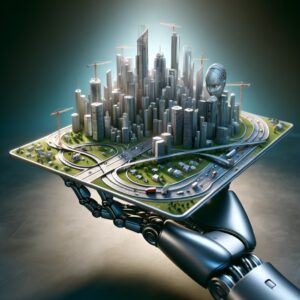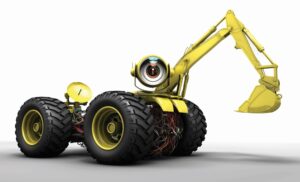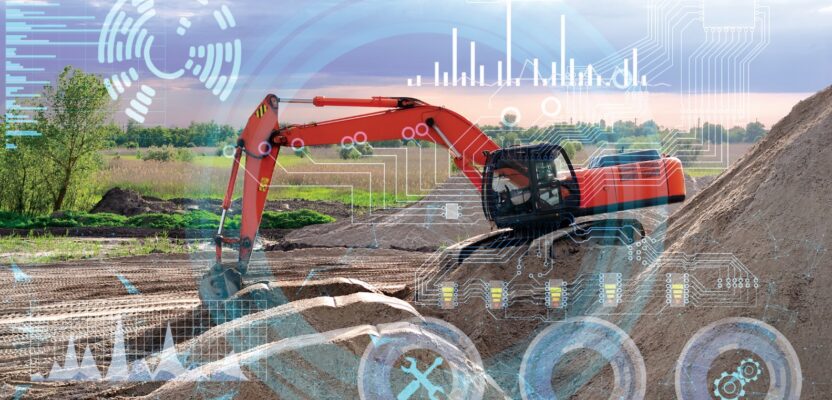Artificial intelligence is more than just a chat bot
Artificial intelligence isn’t going to take your job. Those that know how to use it, however, they absolutely will.
AI started like all other tech trends, a buzzy concept with very cool, very impractical demonstrations, and nearly no way to predict how it could affect our day-to-day lives. But something shifted in 2022 when OpenAI released ChatGPT. It had a clear and immediate impact on our daily work. We could instantly see the value of having our emails written for us, having 100-page reports condensed and summarized in seconds, seeking answers in a more human way than Google ever could.
This exact shift is why AI is so imperative to the future of the construction industry. It offers an intuitive way to automate tasks that free humans to focus on making the most critical decisions rather than the minutiae that wastes our time. Adoption, investment, and value are all increasing across a variety of industries. According to McKinsey & Company, 50 percent of organizations have adopted AI in at least one business area. AI will become increasingly critical to the success and growth of businesses in this space.
Simply put, those that learn how to leverage these technologies will outlast those that don’t.
But you’re smart enough to know not to trust every fad that comes along, and you’ve wasted too much time on failed “disruptors” in the past. What makes AI stand apart? How can you ensure success with AI-empowered tools?
 Defining Artificial Intelligence
Defining Artificial Intelligence
Perhaps the first step is understanding that AI is not a single technology, or even a single algorithm. It’s a broad term for tools that use data to problem solve and reason, and it can modify its decisions based on learned inputs—essentially mimicking human intelligence. AI presents a narrative around data.
Underneath AI are actual technologies such as computer vision, visual-based simultaneous localization and mapping (SLAM), 3D modeling tools, etc. AI inside software translates to doing more with less.
Generative AI solutions are already available to help design teams automate modeling work such as creating 3D components from simple sketches, resulting in faster, less labor-intensive solutions. One recently released 3D modeling tool now lets users create images from an active model through a text prompt.
During construction, there are tools that leverage AI-enabled computer vision and sensors to automatically update schedules, budgets, and catch potential safety issues based on field data collection that can help streamline processes, minimize rework, and boost efficiency. With deep learning, AI software can automatically detect and label real-world assets from massive point cloud datasets with tremendous accuracy and efficiency.
Here are a few ways that AI can help and, in some cases, might already be working behind the scenes for survey and mapping professionals working in the construction industry.
Improved Data Analysis: AI algorithms can process large data sets and identify patterns that may be overlooked by humans. For example, aerial photographs and sensor data can be analyzed to detect changes in site conditions. By automating the analysis of these vast data sets, geospatial professionals can focus on higher-level tasks and do more with less.
Enhanced Precision and Accuracy: Precision and accuracy are essential when it comes to construction, from start to finish. Machine learning and deep learning tools can help refine GNSS data and improve the accuracy of spatial analysis. This is critical for most any construction project, if not all.
Faster Decision Making Through Predictive Analytics: By analyzing historical data compared to current data, AI models can forecast environmental changes that can be used for proactive planning, mitigating risks, and optimizing resources. Leveraging AI and predictive modeling to not just track activities but recommend improvements for the future will be essential to getting the next generation worker up to speed very quickly.
Automating Repetitive Tasks: One of the top benefits of AI is the opportunity to perform tedious, manual tasks. Basically, AI is used to mimic human cognitive functions with a goal of high-quality replacement, meaning that the result produced by AI-powered tools is expected to be as close as possible to the quality of human intelligence. This automation can not only accelerate workflows but can also reduce the chances for human error.
Getting Started with AI
AI is only as good as the accuracy and breadth of data it is using and the questions it is answering.
- Collect High Quality Data. Garbage in, garbage out. AI models are only as good as the quality of data they are referencing. To get the most out of AI, you’ll need to implement strong processes to guarantee fidelity and check and confirm the quality of the data.
- Centralize Data. Just like humans, AI can only provide quality results when it has the proper context to draw on. By collecting diverse data and centralizing it in a common location, you will be able to vastly improve the quality of results.
- Respond to AI. We’ve all seen terrible answers from ChatGPT, and often it’s because of a poor prompt. Many other AI models are the same, we need to use the right tools for the right job and understand that not all AI is made the same. We need to ask the right questions and know what AI models are good for and what they’re not good for.
 If you are considering ways to integrate AI into your workflow, start with small, targeted use cases where you can clearly demonstrate value to gain buy-in from leadership and workers. Automating a straightforward task is a good starting point. These pilot projects are also a good time to ensure you have robust data collection and management processes in place before implementing AI solutions to maximize their effectiveness.
If you are considering ways to integrate AI into your workflow, start with small, targeted use cases where you can clearly demonstrate value to gain buy-in from leadership and workers. Automating a straightforward task is a good starting point. These pilot projects are also a good time to ensure you have robust data collection and management processes in place before implementing AI solutions to maximize their effectiveness.
Next, provide education and training opportunities for your workforce to learn about AI and how it can support their work, not replace them. Training sessions are a great time to address any fears or concerns.
And finally, continually reassess your AI implementations to refine processes based on lessons learned. AI can be a powerful tool for workforce upskilling and development, but, like any technology, it requires careful assessment, testing, flexibility and responsiveness to feedback from users.
Bottom line, automated solutions maximize productivity and efficiency, and can lead to enhanced precision and accuracy, improved data analysis, and faster decision making.
The transformative potential of AI in addressing current industry challenges, such as labor shortages and the need for efficiency and accuracy, is paving the way for future advancements.
Nathan Patton is product marketing manager for Building Construction Field Systems at Trimble. Recently named one of xyHt’s Young Geospatial Professionals to Watch, he works to deliver tangible value through cutting-edge technologies that connect the digital and physical worlds.

